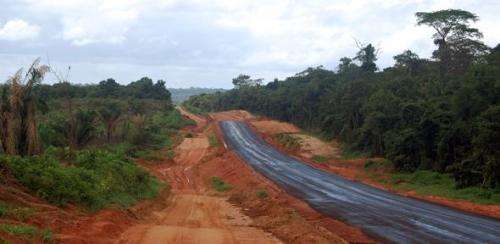Amazonia at a crossroads

The Amazon rainforest faces an uncertain future – one that an international research network hopes to help steer towards sustainability.
The numbers associated with the Amazon are truly staggering. It encompasses nine countries; contains at least a tenth of the known species in the world; provides a home and resources to 31 million people; stores the equivalent amount of carbon to a decade of human-induced emissions for the entire planet; and discharges a fifth of the world's fresh water.
However, rapid social and ecological change, borne on the back of deforestation, harvesting of natural resources and a changing climate, has left the future of the world's largest remaining tropical forest uncertain – Amazonia, today, is "standing at a crossroads", as Dr Toby Gardner describes.
He points to the existence of tough trade-offs that underpin the region's challenges: "The demand for land and natural resources is driven by the development needs of one of the world's largest emerging economies, as well as by the insatiable global food and commodities market. Understanding what management practices can best achieve both economic development and environmental conservation is central to addressing this challenge and shepherding the creation of a more sustainable Amazon."
Gardner leads a new research programme that is motivated by helping to solve this dilemma – the Sustainable Amazon Network – alongside colleagues at Lancaster University, the Goeldi Museum in Belém (Brazil) and the Brazilian Agricultural Research Corporation (Embrapa), with funding from the Brazilian and UK governments and The Nature Conservancy, among others.
The Network's 100-strong group of researchers and students from over 30 institutions are working with conservation organisations, farmers and government officials. Their approach is to assemble an evidence base on the sustainability challenges and ecological consequences associated with land uses and management strategies, and to use this to test the effectiveness and risks of alternative policy choices facing local people and regional governments.
At the heart of the research is an appreciation of the complex array of interactions and feedbacks that characterise the changing face of Amazonia. The project takes as its 'laboratory' two regions of the eastern Amazon: Paragominas, a region infamous for lawlessness, violence, land grabbing, illegal sawmills and rampant forest clearance until the 1990s; and Santarém-Belterra, once a centre of pre-Colombian civilisation, with a long history of farming and now home to smallholder farms and larger agricultural enterprises.
What makes the project distinct from many other research initiatives is the collection of matched data from the same network of landholdings on changes in both the ecological and the socio-economic characteristics of different land and forest use systems. The team's survey design has enabled information to be collected across the full wealth spectrum, from the poorest to the richest farmers, while allowing comparisons at multiple spatial scales – between different farms, catchments and regions.
The result is one of the most comprehensive field assessments ever undertaken in the tropics. Critical issues that are being addressed include the identification of potential threshold effects of deforestation on the degradation of ecological systems, and the identification of strategies at both farm and municipality scales that can effectively reconcile conservation and development goals.
"In addition, one of the longer term implications of any initiative like this is the fact that a large group of students and researchers, many of whom are Brazilian, have been exposed to new ideas and new ways of thinking about sustainability problems, and this, perhaps above anything else, will be the most valuable legacy of our project," added Gardner.
Can the world's largest tropical forest biome be transformed into a sustainable ecological system? "There is a short window of opportunity and there is potential for recovery," said Gardner. "But we cannot afford to be complacent."
Provided by University of Cambridge

















